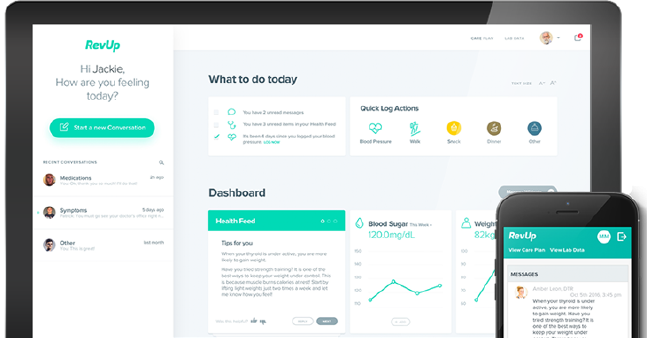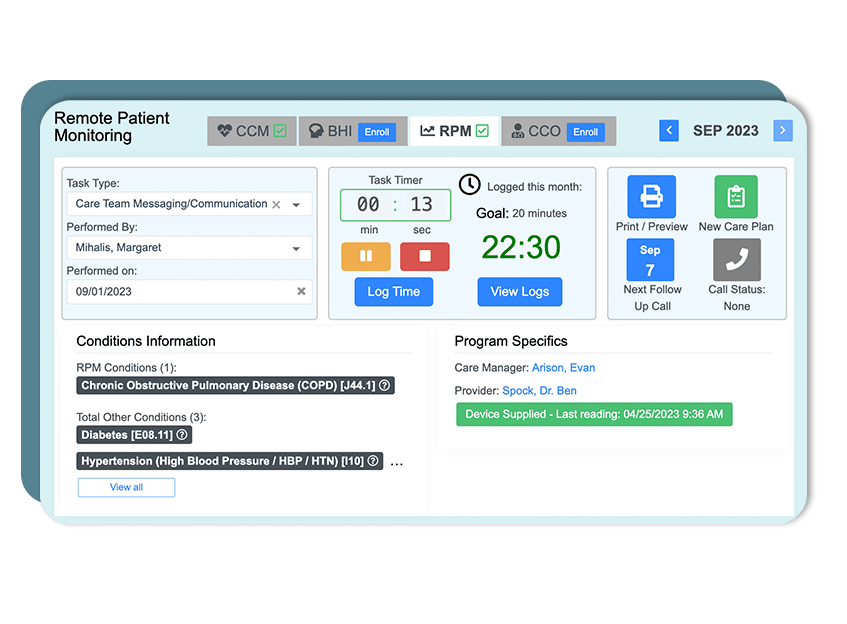Cutting-Edge RPM Software: Boost Patient Outcomes with Innovation
Wiki Article
The Future of Health Care: Remote Individual Monitoring Simplified
As medical care continues to progress, one area that holds immense promise is remote patient tracking. The principle of streamlining this process via technical improvements is reshaping the means care is provided and received. With an emphasis on boosting individual outcomes and simplifying medical care delivery, remote monitoring is positioned to revolutionize the sector. By exploring the benefits, technological advancements, and future trends in this area, we can get valuable understandings right into the transformative potential of remote individual monitoring.Advantages of Remote Individual Monitoring
Remote client surveillance offers a multitude of benefits for both medical care companies and individuals alike. In addition, remote patient tracking enhances the overall high quality of care by providing an extra alternative and comprehensive view of individuals' wellness status past conventional in-person brows through.Furthermore, remote person tracking can cause better client results and fulfillment. Individuals can appreciate the benefit of receiving treatment in the convenience of their own homes while still knowing that their health and wellness is being closely checked. This can cause enhanced individual engagement and adherence to therapy plans, inevitably leading to far better wellness outcomes. In addition, remote tracking can minimize the need for regular healthcare facility brows through, lowering health care prices for both clients and service providers. Overall, the advantages of remote patient monitoring are clear, making it an important tool in contemporary health care delivery.
Modern Technology Driving Remote Surveillance
In the realm of modern-day healthcare, technological innovations play a critical role in driving the evolution and performance of remote patient surveillance. The assimilation of ingenious innovations such as wearable gadgets, mobile applications, and cloud-based systems has changed the way healthcare service providers remotely handle and keep an eye on client health - remote patient monitoring software. These technologies enable constant real-time tracking of crucial indications, medication adherence, and various other essential health information, permitting prompt treatments and customized care plansOne key technology driving remote monitoring is the Net of Points (IoT), which enables seamless connection in between clinical tools and medical care systems. IoT tools such as smartwatches and cordless sensors transmit and collect client data to central platforms, facilitating remote monitoring from throughout the globe. Expert system (AI) and machine learning formulas further improve remote monitoring by analyzing substantial quantities of person data to identify patterns, predict health and wellness trends, and alert doctor to prospective problems.
Influence On Medical Care Distribution
With the combination of sophisticated modern technologies driving remote individual monitoring, the effect on medical care delivery is becoming increasingly profound and transformative. Remote individual surveillance allows doctor to use even more proactive and individualized like patients, resulting in boosted health and wellness outcomes and lowered hospital admissions. By remotely tracking crucial indicators, signs, and medication adherence, medical care specialists can interfere early, stopping difficulties and boosting the overall quality of care.Furthermore, remote monitoring improves access to health care solutions, particularly for people in country or underserved areas. Clients can receive constant monitoring and assistance from their homes, getting rid of the requirement for regular in-person visits. This not just saves time and reduces prices for both clients and medical care centers yet also minimizes the risk of exposure to infectious illness, an important consideration in the current health care landscape.
Furthermore, remote patient monitoring allows healthcare providers to much better prioritize and allot resources care based upon real-time data. By determining high-risk individuals and interfering promptly, healthcare delivery comes to be much more efficient and effective, eventually leading to a more lasting and patient-centered healthcare system.
Improving Patient Outcomes

In addition, RPM permits aggressive administration of persistent conditions, lowering the possibility of intense worsenings and hospital readmissions. People take advantage of raised convenience and comfort, as they can get care in their very own homes while remaining linked to their health care suppliers. This constant tracking not just boosts individual fulfillment yet additionally cultivates a sense of empowerment and involvement in their own health and wellness monitoring.
Future Trends in Remote Tracking
Accepting advanced innovations in remote individual tracking is shaping the future landscape of health care delivery. The future trends in remote surveillance are expected to reinvent the way medical care is provided, making it much more patient-centric and reliable. One considerable trend is the raised use wearable gadgets and sensors to collect real-time data, making it possible for medical care providers to keep an eye on individuals continuously without the requirement for regular in-person visits. These devices can track crucial signs, medication adherence, and activity levels, supplying an extensive sight of the person's health condition.
Additionally, telehealth platforms are coming to be extra sophisticated, permitting digital appointments, remote medical diagnosis, and remote patient keeping an eye on all in one incorporated system (remote patient monitoring software). This holistic method to remote monitoring is enhancing healthcare shipment, improving person complete satisfaction, and ultimately, boosting total high quality of care
Verdict
Finally, remote client monitoring offers numerous advantages in medical care distribution, driven by innovations in modern technology. It has the possible to enhance individual outcomes and reinvent the method healthcare is supplied. Future trends in remote surveillance will remain to shape the landscape of medical care, supplying possibilities for more customized and effective patient care.Remote individual tracking provides a multitude of benefits for both healthcare providers and people alike. Furthermore, remote person surveillance improves the overall top quality of treatment by offering a more thorough and all natural view of patients' health standing past typical in-person brows through.
In addition, remote person monitoring can lead to better individual outcomes and complete satisfaction. Remote person surveillance permits medical care service providers to supply even more positive and personalized treatment to clients, leading to enhanced wellness end results and reduced healthcare facility admissions. Remote person surveillance (RPM) plays a considerable function in improving person end results by giving constant, real-time data that allows healthcare carriers to intervene promptly and readjust treatment strategies as required.
Report this wiki page